WRT’s Community Design group recently gathered to reflect on how social distancing has affected public engagement, and discussed how our firm can continue utilizing virtual outreach efforts moving forward.
WRT values the interdisciplinary exchange of ideas between community members and stakeholders and we strive to create an inclusive and creative communication system that allows us to better understand the needs of everyone involved. In-person engagement events are an important aspect of all our projects which involve community participation and input, but the onset of COVID-19 has required us to pivot our engagement efforts to respect social distancing guidelines.
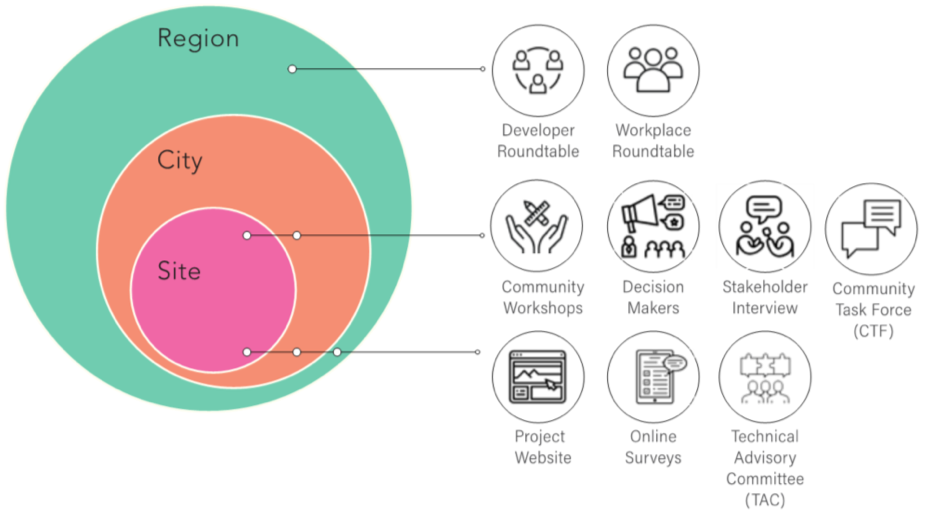
Project websites and online surveys have already been an important part of our engagement toolkits, but our new dependence on these virtual platforms to carry out our engagement efforts leads to new challenges. One challenge we face is that virtual engagement brings an equity issue to light, making it harder for people without access to computers and home internet service, and people without a high level of comfort in online platforms, to participate. It is also a challenge to replicate the kind of hands-on engagement activities that work in an in-person setting- like presenting giant maps and marking up locations with markers and dots.
Case Studies
In order to understand how we can can continue to address the challenges caused by our reliance on contactless engagement, we focused our attention to recent or ongoing projects that have utilized in-person, virtual, or both forms of engagement so we can improve our strategies moving forward.
Clark-Fulton Master Plan Cleveland, OH
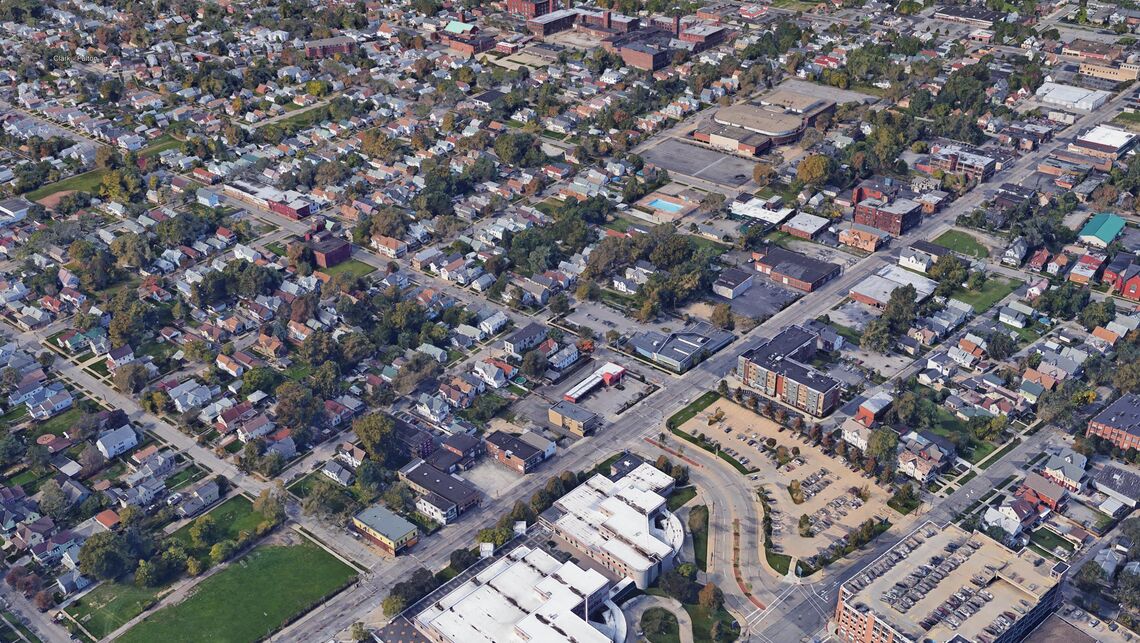
In order to create a resident-driven community master plan for the Clark-Fulton neighborhood the project team is working closely with a broad coalition of local community partners as well as a team of resident Ambassadors. The pivot from in-person engagement to virtual engagement happened just as the planning team was preparing to depart for their 1st Site Visit and Planning Summit in Mid-April, at which point the entire process was re-imagined as a virtual, remote and socially-distanced engagement process.
Clark-Fulton Master Plan Overview

The project team used their enhanced project website, postcard mailers, social media, interactive virtual meetings and online mapping and survey tools to gather community input. During this initial engagement period of “listening and learning” the project team has also been training in the resident Ambassadors to further boost community outreach efforts and run neighborhood initiatives. As Ohio begins to take steps towards re-opening, the team is also developing selective in-person materials for socially-distanced pop-ups at neighborhood events and giveaways. The team is also exploring the potential to work with local artists to create a highly visible mural and other eye-catching physical projects in the neighborhood that can raise awareness about the planning process and encourage more engagement.
San Lorenzo Creekway Alameda County, CA
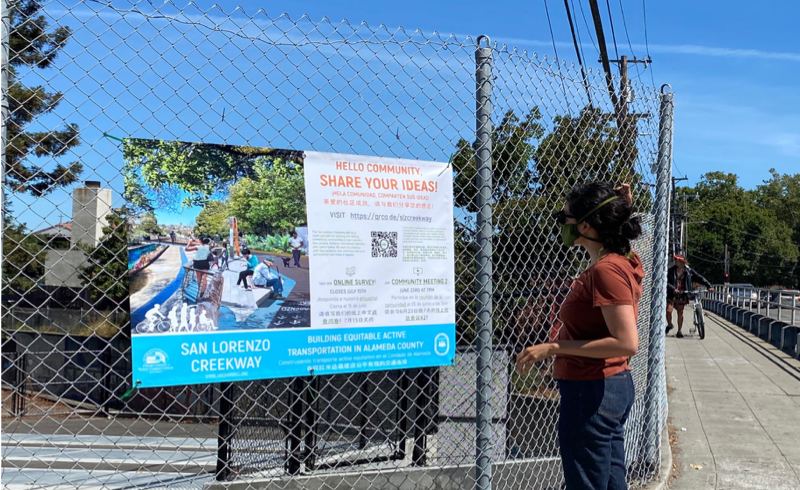
The project team for the San Lorenzo Creekway is working to build an equitable active transportation system in Alameda County, California. An integral part of the team’s design process is built around an inclusive engagement process that elicits feedback from a wide, representative range of residents that have typically been hard to reach in the planning process. In response to the COVID-19 pandemic, the design and engagement plan was recalibrated to respond to the many new challenges experienced by the community. The engagement strategies fundamentally shifted to focus on a hybrid of both digital and community-led activities to stay connected with groups and individuals during shelter-in-place restrictions.
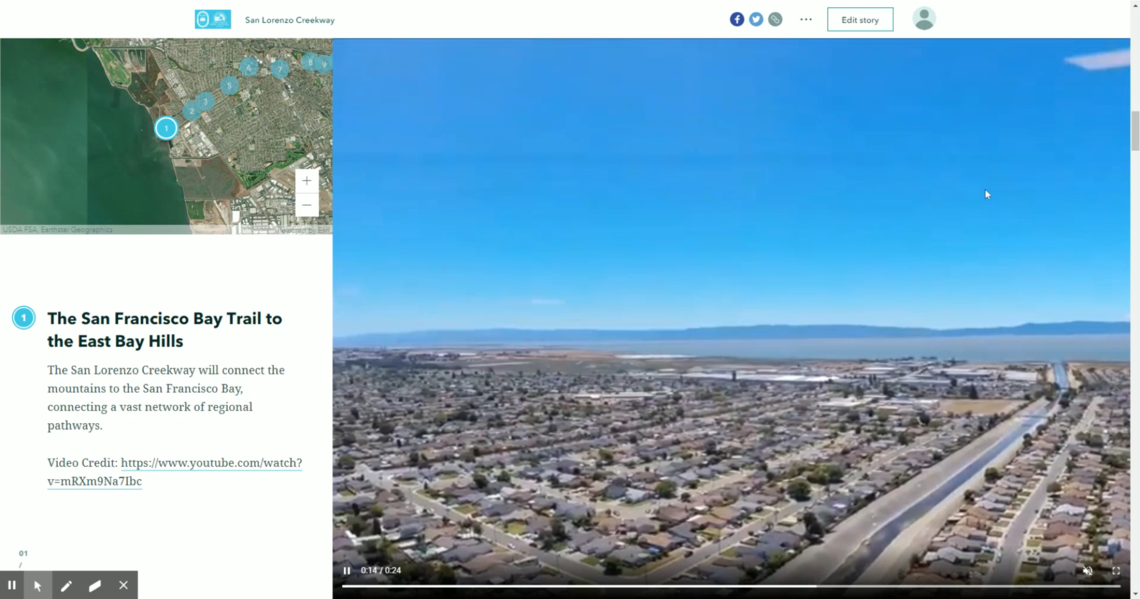
Virtual community workshops, online surveys, a project website, and newsletter emails circulated by local stakeholder groups are some of the virtual ways that the team has been able to stay connected with the interested community. To keep a physical presence on the ground, the project team hung large banners around the future alignment of the San Lorenzo Creekway and distributed flyers at local testing sites and food distribution centers. Printable surveys were made available for senior advocacy groups and any other groups interested in helping to distribute the information.
A key part of the engagement strategy was the Youth Ambassadors program which was sponsored by additional grant funding and supported by local school district partners and Bike East Bay, a community-based partner organization focused on active transportation advocacy. The San Lorenzo Creekway Youth Ambassadors made new connections to local students and their families and helped broaden the diversity of feedback that has served to make the project even more accessible and responsive to community needs.
Santa Clara Downtown Precise Plan Santa Clara, CA
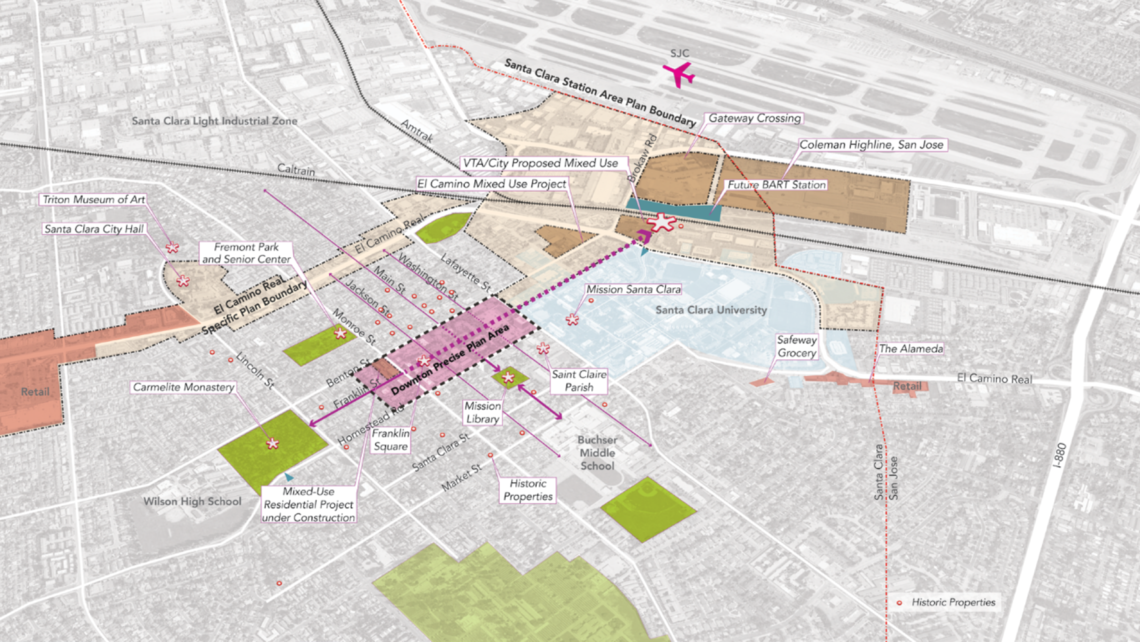
The engagement goals for the Santa Clara Downtown Precise Plan have primarily been focused on tapping into previous community engagement efforts and expanding the sphere of involvement with the idea of making this plan a reality. The team hopes to engage a larger community and obtain a demographically representative population of Santa Clara to take part in the project engagement phases.
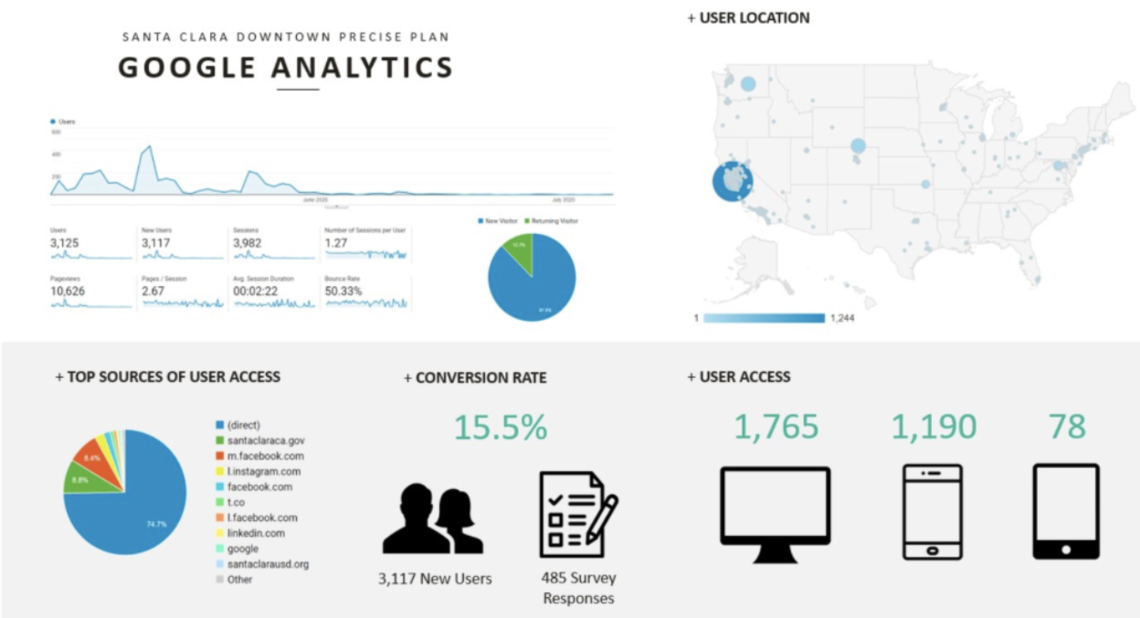
The project started in October of 2019 with a robust engagement strategy to involve community, stakeholders, regional agencies and future developers. The planning team was able to hold some in-person engagement pre-COVID-19, including a workshop, stakeholder interviews and the developer round table. With the advent of COVID-19, the design team has focused on creating virtual engagement tools. They have launched a project website, conducted online surveys with an expanded outreach in partnership with the city, recorded webinar style project presentation videos and created virtual “Meetings Outside-the-Box". The virtual “Meetings Outside-the-Box" are deep dive breakout sessions led by one community leader, and they allow for other community members to get site specific design input using Zoom annotation tools. Over 3,100 users have visited the project website, while 485 have taken the survey and left over 1,200 written comments.
Tunitas Creek Beach Improvement Project San Mateo County, CA
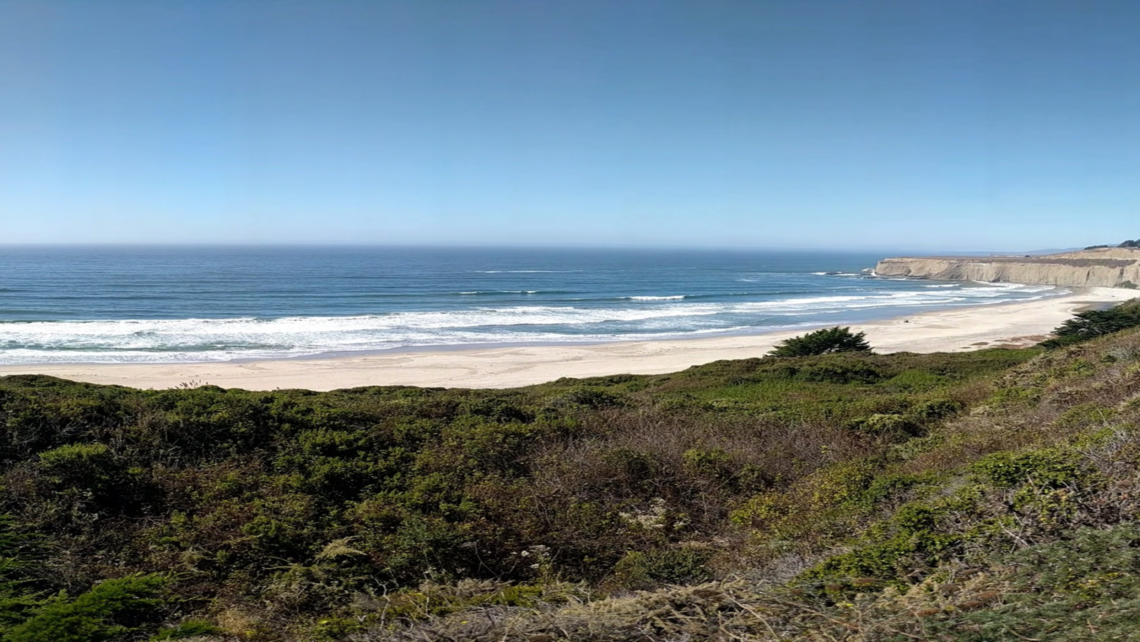
The community engagement efforts for the Tunitas Creek Breach Improvement Project have been tailored to the diverse geography and demographics that exist in San Mateo County. The team plans to reach traditionally underrepresented communities, including youth, Native American, and Hispanic populations. In order to reach as many members of the community as possible, the project team has implemented online engagement measures like surveys and introductory videos produced in multiple languages. The team has also acknowledged that not everyone in San Mateo County has access to digital media or uses it daily, so low-tech engagement measures like paper surveys on display at local markets and parks have been made available.
Moving Forward
As we strive to create a more interactive digital experience, a hybridization of our typical community engagement efforts and our new ones in this era of social distancing has become an essential part of our engagement toolkit. We have learned even though there is a greater reliance on virtual engagement, it is still important to reach people in other non-virtual ways. By mailing postcards, putting up wall graphics, working with paid youth ambassadors to get the word out, recording multilingual videos, printing flyers, and trying to give our clients a road map to engaging their community, we are giving more attention to outreach.
By sending out virtual surveys firm-wide and asking for responses, we were able to gather data from our colleagues and better understand where our engagement capabilities stand now. We are continuing to grow and systematically build our skills firmwide. New virtual engagement software and tools have been proposed as options to add to our virtual toolkit, and we are already starting to leverage the capabililities of the online tools we use. Further meetings to discuss how we can continue to adapt our engagement efforts and address new challenges have already been established. WRT will continue to value the communities that we work with, and we look forward to new opportunities.
Moving Forward
As we strive to create a more interactive digital experience, a hybridization of our typical community engagement efforts and our new ones in this era of social distancing has become an essential part of our engagement toolkit. We have learned even though there is a greater reliance on virtual engagement, it is still important to reach people in other non-virtual ways. By mailing postcards, putting up wall graphics, working with paid youth ambassadors to get the word out, recording multilingual videos, printing flyers, and trying to give our clients a road map to engaging their community, we are giving more attention to outreach.
By sending out virtual surveys firm-wide and asking for responses, we were able to gather data from our colleagues and better understand where our engagement capabilities stand now. We are continuing to grow and systematically build our skills firmwide. New virtual engagement software and tools have been proposed as options to add to our virtual toolkit, and we are already starting to leverage the capabililities of the online tools we use. Further meetings to discuss how we can continue to adapt our engagement efforts and address new challenges have already been established. WRT will continue to value the communities that we work with, and we look forward to new opportunities.